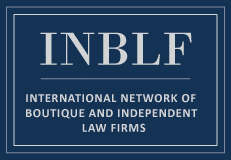The U.S. Supreme Court has unanimously ruled that landowners can sue the Environmental Protection Agency (“EPA”) to challenge its issuance of an administrative “compliance order” claiming their land is a “wetland” subject to its regulatory jurisdiction under the Clean Water Act (“CWA”). The Court’s decision in Sackett v. Environmental Protection Agency, 566 U.S. – (2012) may well open the way for landowners to challenge other types of administrative decisions by the EPA and U.S. Army Corps of Engineers asserting CWA jurisdiction over lands. It may also enable those receiving administrative enforcement orders under other federal statutes, such as the Clean Air Act, to challenge those orders in federal district courts. By its decision, the Court has undone, at least partly, the government’s heretofore successful campaign to convince federal courts to refrain from what the agencies call “preenforcement review” of their decisions about jurisdiction over wetlands. Over the last three decades, at the government’s urging, lower courts have generally refused to review such agency decisions until either the agency sues a landowner or a landowner seeks and obtains a permit decision from the agency.
Under the CWA, the Corps and EPA regulate “discharges” of “pollutants” into “navigable waters,” which the Act defines as “the waters of the United States.” The EPA, which is primarily responsible for administering the CWA, administers a permit program under section 402 for pollutant discharges, known as the National Pollutant Discharge Elimination System (“NPDES”). In section 404, Congress carved an exception out of the EPA’s authority and gave the Corps the authority to permit discharges of two particular types of “pollutants,” i.e. “dredged” and “fill materials.” Since the mid-1970s, the EPA and Corps, largely with the acquiescence of the federal courts, have broadly defined “waters of the United States” to include not only rivers, lakes, and other readily recognizable waterbodies, but also “wetlands.” Caught in the political crossfire between those who see wetlands as natural resources and those who view them as private property, the agencies have gradually stretched the meaning of “wetlands” beyond the originally expressed idea of swamps, marshes, and bogs to encompass much drier areas, including some hardwood forests, fields, and cultivated farmland, that may be saturated with rainwater for as little as a few weeks during the course of a year. Both agencies have the authority, through somewhat different procedures, to determine whether areas are waters or wetlands subject to their regulatory jurisdiction and to take actions to enforce the Act and remedy violations.
Preparing to build a house, the Sacketts filled part of their residential lot located near a lake in Idaho. Months later they received a compliance order from the EPA stating that their lot contains jurisdictional wetlands and they had filled those wetlands in violation of the CWA. The order also directed them to restore the site in accordance with a restoration plan approved by the EPA and provide EPA employees access to the site and to all records relating to conditions on the site. The Sacketts, believing their land does not contain wetlands subject to the CWA, asked the EPA for a hearing, but the EPA denied the request.

